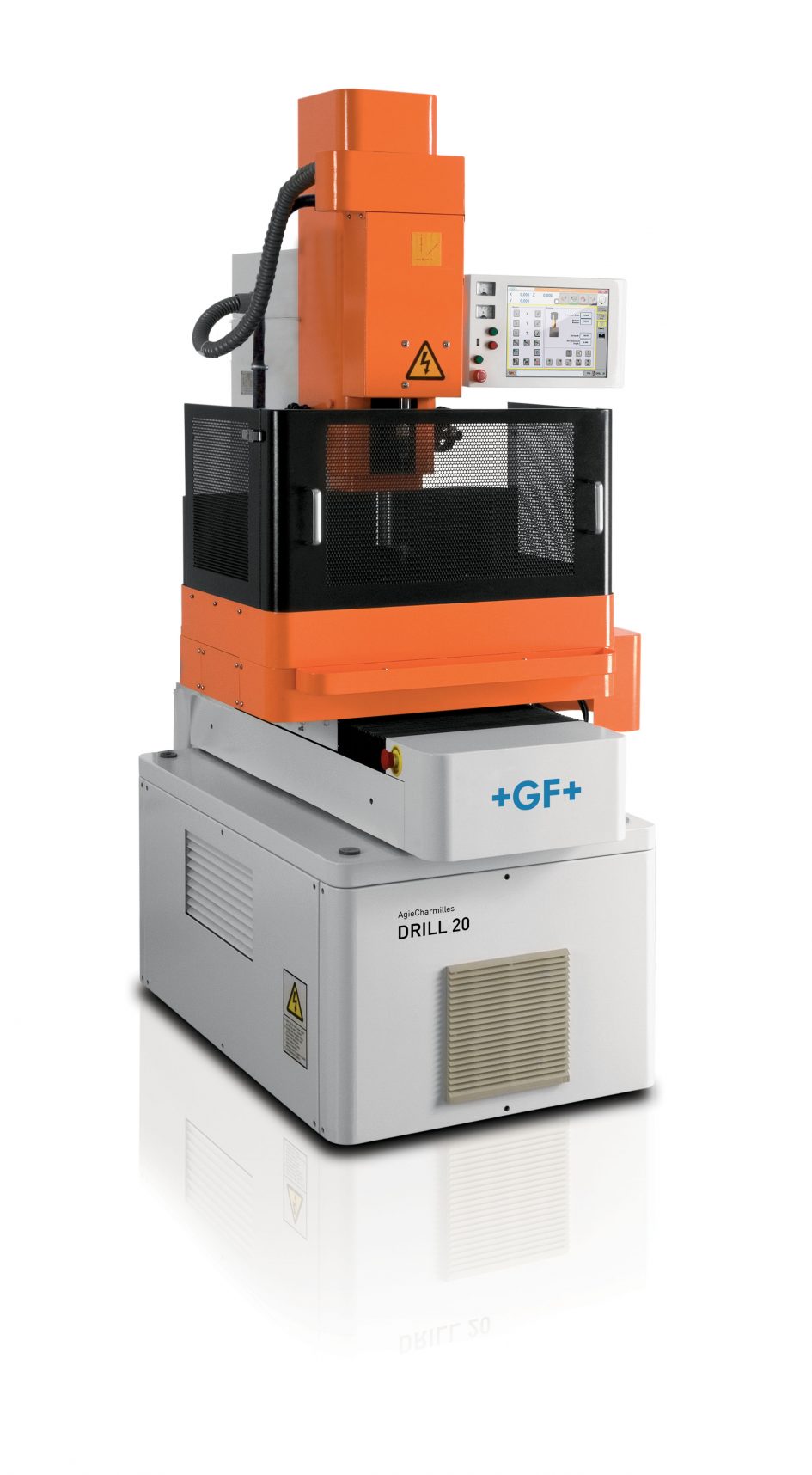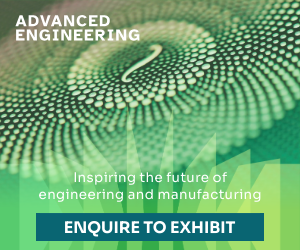EDM drilling makes it possible to produce the smallest of drill holes, independent of material hardness, at high speed.
The process is fast and flexible. It was once used (mainly) for creating starter holes (for subsequent wire EDM operations), but now is used more extensively in the aerospace, medical and mould tool and die sectors.
GF Machining Solutions can supply manufacturers with best-in class EDM hole drill solutions exemplified by its AgieCharmilles DRILL 20 machine.
Electrical discharge machining (EDM) drilling is different and, some may say, is more complex than typical chip-removal processes.
In the EDM drilling process, energy is directed into an electrode and the workpiece is submerged in a dielectric fluid. When the two are separated by a small space – the spark gap – a pulsed electrical discharge from the electrode creates a spark that removes material from the workpiece through a process of melting and evaporation.
In typical applications, brass or copper electrodes with the correct finish-hole diameter are used to create holes in the workpiece.
The electrode is charged by the EDM machine’s power supply and is fed forward to create the machining feed rate. The power usage and electrode feed rate, as well as the motion of the machine’s axes, are all controlled by the machine’s CNC.
A rotating spindle holds the electrode in place, and a guide ensures that the correct location is held during the drilling process. As the electrode creates a hole in the material, a high-pressure dielectric is used to flush the eroded material away – quickly and efficiently – enabling deeper holes to be made.
As holes become deeper, maintaining the high-pressure flush becomes even more important because the removed material has farther to travel up the hole to be removed.
If flushing conditions are poor, or if the pressure is not high enough, material can quickly build up and will begin acting like an extension of the electrode. If this occurs, sparks will arc across the dielectric fluid and hit the workpiece in unwanted areas creating a ‘pitting’ effect on the workpiece.
The only limitation to workpiece material choice in EDM operations is that it must be conductive.
In mechanical (conventional) drilling applications, the tool makes physical contact with the material and is more of a friction process. The drill can “wander” or “walk” as it makes contact with the workpiece, especially if it is drilling into a concave or convex part. The problems associated with wandering can be exacerbated when drilling pre-hardened parts.
Hardened metal, material with a hardness of 70 and higher on the Rockwell hardness C scale can be drilled using EDM.
EDM is a thermal process where material is eroded away rather than mechanically cut. The electrode therefore does not come in contact with the workpiece and no physical stress is put on the material. A major advantage of EDM drilling is that the process does not create exit hole burrs.
One of the most common EDM drilling applications is in the creation of starter holes for wire EDM operations: but such is the accuracy and process reliability of today’s EDM drilling technology that there are a growing number of production-led applications in the aerospace*, mould tool and die, and medical industries (to name but a few), where EDM drilling is considered a key/core enabling technology.
EDM drilling machines are designed to create holes quickly and the hole depth: diameter ratio can reach up to 200.
Hole diameters using EDM drills vary but are usually between 0.3mm to 3.0mm and with advanced EDM drills (employing their 5-axis configuration) – holes can be machined at any angle on a workpiece with inclined surfaces.
Control technology is important when performing high-precision EDM hole drilling operations.
The motion of the EDM’s axes will be familiar to anyone who has run a milling machine: moving the electrode through the work envelope follows the same principle. However, the control on EDM machines (per se) also manages the power supply, spark creation and automatic electrode feed too.
One of the most important parts of the control is the power supply system that supplies the energy to the electrode. Sophisticated energy control is important to create very fine sparks, and the smaller the spark, the smaller the hole that can be produced.
Power levels are adjusted automatically by the control helping to improve accuracy and surface finishes.
EDMs are adept at creating very small holes in difficult-to-machine materials. Using small diameter electrodes means that tool breakage, a scourge in conventional drilling operations, does not occur.
Electrodes used for precision EDM drilling operations are tubular (not solid), with an spiral-shaped interior which when combined with high-pressure flushing ensures that machined material is not left in the hole.
The AgieCharmilles DRILL 20 is a versatile, high-precision and high-speed EDM hole drill machine with an integrated rotating spindle.
The machine can be used to drill holes with depths up to 200mm and can accommodate small electrodes with diameters ranging from 0.1 – 0.3 mm making it ideal for a range of applications including drilling fine start holes on lead frames or high-speed stamping moulds.
The Drill 20 features a powerful and easy-to-use HMI enabling fast and real time process monitoring and optimisation, and easy job preparation and set-up. Technology settings can be selected automatically for electrode material, workpiece height and electrode diameter etc., to ensure machining optimisation.
The machine is equipped with sensors that detect short circuits, temperature fluctuations and dielectric fluid levels: all vital to ensure process reliability.





